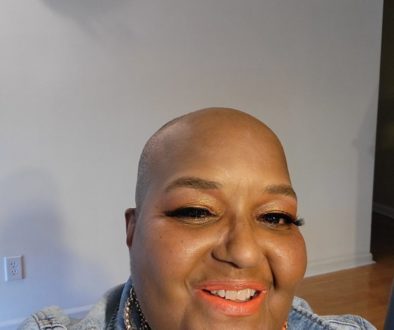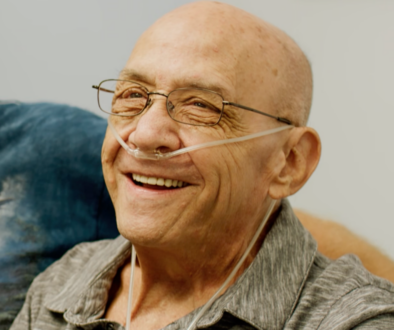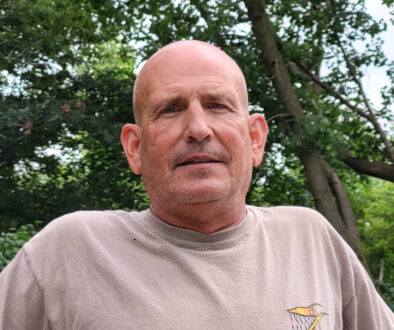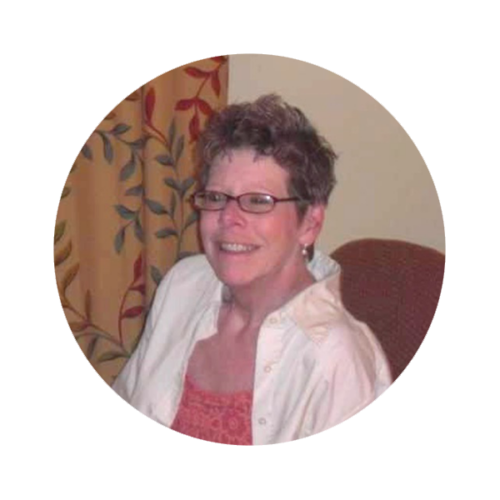
Cindy’s Story
“I still have emphysema and take daily medications, but I am back to living life again. My goals were to be able to walk around with my husband and take my kids shopping and I can do that now, and more!”
Procedure Details:
Age at Treatment: 56
Date of Procedure: January 2017
Hospital: University of Louisville
Hometown: Carlisle, KY
Cindy’s Story
“I still have emphysema and take daily medications, but I am back to living life again. My goals were to be able to walk around with my husband and take my kids shopping and I can do that now, and more!”

Procedure Details:
Age at Treatment: 69
Date of Procedure: May 4, 2021
Hospital: St. Joseph’s Hospital – Phoenix, AZ
Hometown: Chandler, AZ
Life Before Zephyr® Valves:
Before emphysema, I led a busy, active life. I worked in accounting, raised two kids, and loved to travel with my husband. We would rent a houseboat every year on the lake with a big group of friends.
I was diagnosed with emphysema/COPD at age 46 during a screening for an autoimmune disease. Over the years I used several medications to help control the symptoms including prednisone, methotrexate, and a nebulizer. I was finally able to quit smoking for good in 2012, but the disease had begun to really impact my life. From 2008 to 2014, I was in the hospital every year. I had to go on disability. In 2014, I was hospitalized three times and during one of those episodes, I started turning blue and scared my poor husband to death! I was not intubated but was put on a ventilator. These were very frightening times for me and my family.
Over the years, the most basic tasks became difficult. I used oxygen during the day in order to go anywhere or do basic housework. Even taking a shower was difficult. I lost a lot of weight because I was very down and had no appetite. I was anxious all the time. It is hard to live when you can’t breathe.
It was difficult on my family too. The kids had to see me struggle and be in and out of the hospital. My husband owned a heating company but ultimately had to close it and stay home to take care of me. One of the worst parts of the disease was how it impacted my role as a mom. It was tough to miss the kids’ activities and special moments. When my daughter wanted to go try makeup and do those fun mom and daughter things, it was often my husband who would have to take her.
In 2015, my pulmonary doctor suggested I get on a lung transplant list. I have a friend who had a double lung transplant and the recovery was a grueling process. And, even after going through all that, the transplant only gives you an estimate of five years to live. When I was referred to Louisville for the valves, even though it was in the trial phase, I went to talk to them. My husband did a lot of research, and the trial team did a great job explaining how it would work so I decided to go for it.
– Cindy
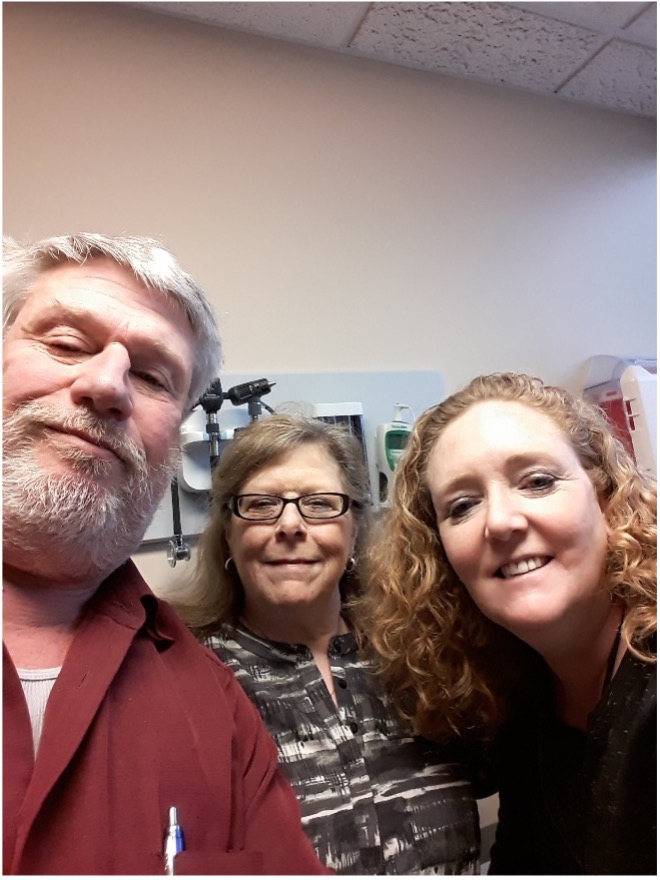
Life After Zephyr Valves:
Having the Zephyr Valves was life-changing for me. I stayed in the hospital for six days but overall, the procedure went smoothly. I know for sure that it was a lot easier than having a lung transplant.
It’s been almost two years and I am doing great. I am back to doing housework and I even go to the gym. I bring my oxygen reader and my inhaler in case I need it, but I am not afraid to be active anymore. I feel like I can take care of myself again. The Zephyr Valves allowed me to feel like a normal person again.
Not only am I feeling better, but the stress on my family is much less. My husband is back to work and the kids don’t worry as much. I have been able to travel to my daughter’s bowling tournaments. Before I had the valves, I had to pack my oxygen tank and give myself a big pep talk to make it to a tournament. There were always crowds and sometimes it was hard to find a seat. Now I don’t worry about going at all. I don’t even bring oxygen. I can stand if I have to, and I walk to the bathroom with no problem.
I still have emphysema and take daily medications, but I am back to living life again. My goals were to be able to walk around with my husband and take my kids shopping. I can do that now, and more!
I am travelling again. My husband and I went to the Charlotte Motor Speedway in North Carolina for a car show and stopped in Helen, Georgia on the way to sightsee. Taking that trip was amazing because before the valves, just walking from one room to another in my house was a big effort. I really didn’t think I’d be travelling again, but here I am.
I am sharing my story because I want other severe emphysema sufferers to have hope and to know that this treatment is available
Results may vary.
US-EN-1728-v1
What is the Zephyr Valve procedure?
The Zephyr Valve has been shown to help patients breathe easier, do more, and enjoy life.1
Despite taking the best available medications, many patients with severe COPD/emphysema suffer from hyperinflation of their lungs where air becomes trapped in the lungs, preventing fresh air from entering and thereby causing severe shortness of breath.
The Zephyr Valves reduce lung hyperinflation by allowing trapped air to escape and preventing new air from entering that diseased lobe. This allows the healthier parts of the lung to function better and results in patients being able to breathe more easily and experience less shortness of breath.
The valves are placed via bronchoscopy, with no incision or cutting, so these benefits are achieved without the risks of traditional surgical options. The procedure is usually complete in under an hour.
Complications of the Zephyr Endobronchial Valve treatment can include but are not limited to pneumothorax, worsening of COPD symptoms, hemoptysis, pneumonia, dyspnea and, in rare cases, death.
-
Before emphysema, I led a busy, active life. I worked in accounting, raised two kids, and loved to travel with my husband. We would rent a houseboat every year on the lake with a big group of friends.
I was diagnosed with emphysema/COPD at age 46 during a screening for an autoimmune disease. Over the years I used several medications to help control the symptoms including prednisone, methotrexate, and a nebulizer. I was finally able to quit smoking for good in 2012, but the disease had begun to really impact my life. From 2008 to 2014, I was in the hospital every year. I had to go on disability. In 2014, I was hospitalized three times and during one of those episodes, I started turning blue and scared my poor husband to death! I was not intubated but was put on a ventilator. These were very frightening times for me and my family.
Over the years, the most basic tasks became difficult. I used oxygen during the day in order to go anywhere or do basic housework. Even taking a shower was difficult. I lost a lot of weight because I was very down and had no appetite. I was anxious all the time. It is hard to live when you can’t breathe.
It was difficult on my family too. The kids had to see me struggle and be in and out of the hospital. My husband owned a heating company but ultimately had to close it and stay home to take care of me. One of the worst parts of the disease was how it impacted my role as a mom. It was tough to miss the kids’ activities and special moments. When my daughter wanted to go try makeup and do those fun mom and daughter things, it was often my husband who would have to take her.
In 2015, my pulmonary doctor suggested I get on a lung transplant list. I have a friend who had a double lung transplant and the recovery was a grueling process. And, even after going through all that, the transplant only gives you an estimate of five years to live. When I was referred to Louisville for the valves, even though it was in the trial phase, I went to talk to them. My husband did a lot of research, and the trial team did a great job explaining how it would work so I decided to go for it.
-
Having the Zephyr Valves was life-changing for me. I stayed in the hospital for six days but overall, the procedure went smoothly. I know for sure that it was a lot easier than having a lung transplant.
It’s been almost two years and I am doing great. I am back to doing housework and I even go to the gym. I bring my oxygen reader and my inhaler in case I need it, but I am not afraid to be active anymore. I feel like I can take care of myself again. The Zephyr Valves allowed me to feel like a normal person again.
Not only am I feeling better, but the stress on my family is much less. My husband is back to work and the kids don’t worry as much. I have been able to travel to my daughter’s bowling tournaments. Before I had the valves, I had to pack my oxygen tank and give myself a big pep talk to make it to a tournament. There were always crowds and sometimes it was hard to find a seat. Now I don’t worry about going at all. I don’t even bring oxygen. I can stand if I have to, and I walk to the bathroom with no problem.
I still have emphysema and take daily medications, but I am back to living life again. My goals were to be able to walk around with my husband and take my kids shopping. I can do that now, and more!
I am travelling again. My husband and I went to the Charlotte Motor Speedway in North Carolina for a car show and stopped in Helen, Georgia on the way to sightsee. Taking that trip was amazing because before the valves, just walking from one room to another in my house was a big effort. I really didn’t think I’d be travelling again, but here I am.
I am sharing my story because I want other severe emphysema sufferers to have hope and to know that this treatment is available
-
The Zephyr Valve is the first FDA-approved, minimally invasive device available in the U.S. for treating patients with severe emphysema. A physician uses a bronchoscope to place on average 4 tiny valves in the airways to block off the damaged areas of the lungs so air no longer gets trapped there. No cutting or incision is required and the procedure is usually completed in under an hour.
The valve placement allows the healthier parts of the lungs to expand and relieves the pressure on the diaphragm, which decreases shortness of breath and makes breathing easier. Patients report being able to take full breaths immediately after the procedure and within a few days are back to doing everyday tasks with ease.
Results from case studies are not necessarily predictive of results in other cases. Results in other cases may vary.
“Not only am I feeling better, but the stress on my family is much less.”
– Cindy


